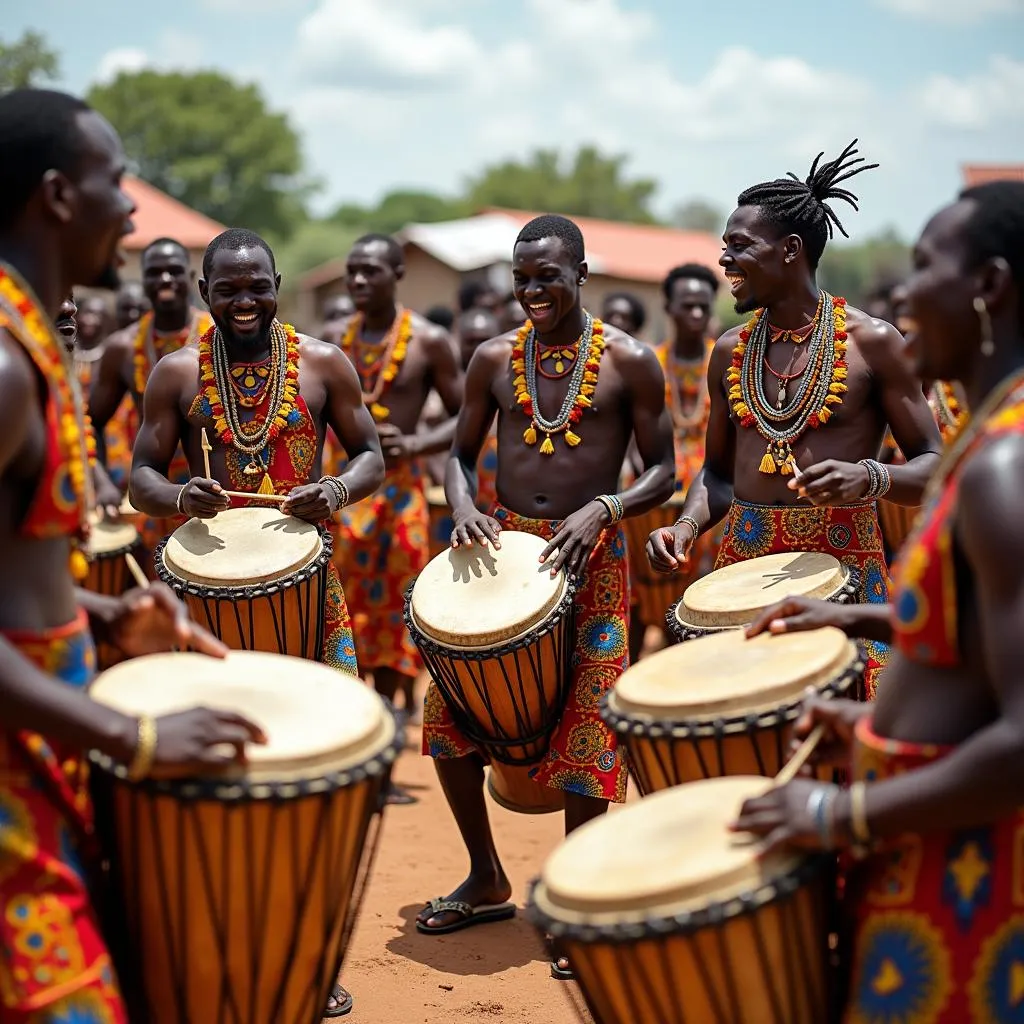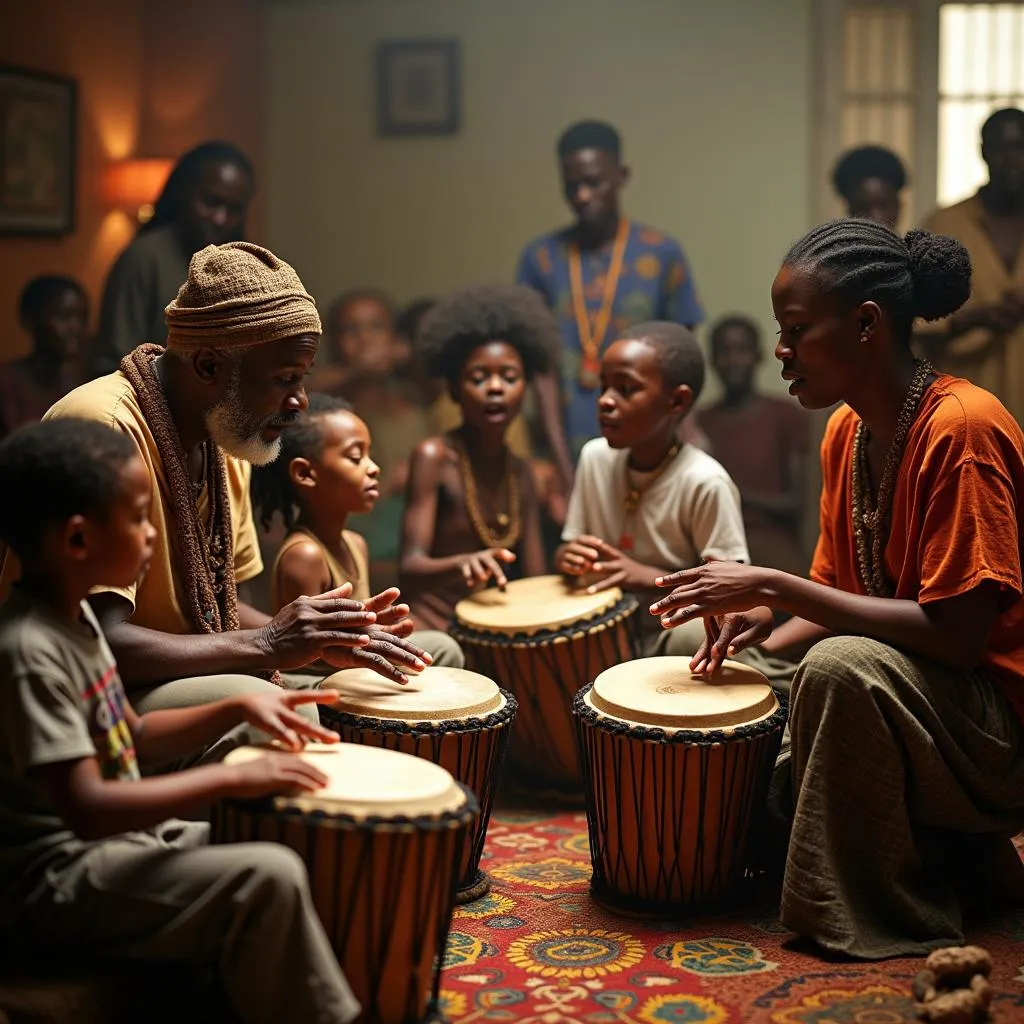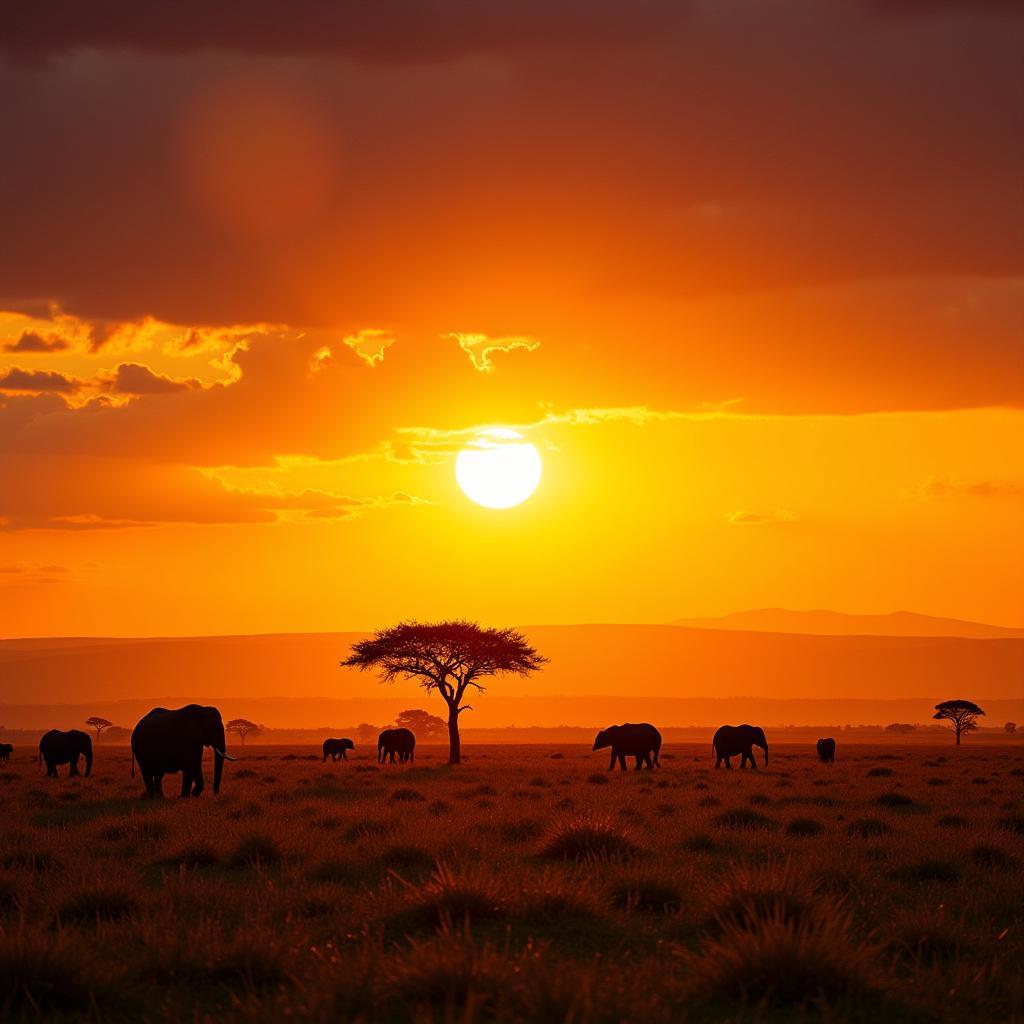The Powerful Rhythms and Artistry of African Drumming Performers
African drumming is more than just a musical performance; it’s a vibrant tapestry woven into the very fabric of the continent’s culture and history. For centuries, African Drumming Performers have commanded the power of percussion, transforming simple beats into complex rhythms that tell stories, celebrate life, and connect communities.
 African drumming performance at a village ceremony
African drumming performance at a village ceremony
The Heartbeat of a Continent: Exploring the Diversity of African Drumming
From the sun-drenched Sahara Desert to the lush rainforests of the Congo Basin, the styles and traditions of African drumming are as diverse as the continent itself. Each region boasts unique rhythms, instruments, and performance techniques passed down through generations.
In West Africa, the djembe, a goblet-shaped drum carved from a single piece of wood, reigns supreme. Its sharp, resonant tones are often accompanied by the melodic sounds of the balafon, a wooden xylophone. East Africa is characterized by the energetic rhythms of the ngoma, a large, cylindrical drum often played during ceremonies and celebrations. Central Africa, on the other hand, features the hypnotic beats of the talking drum, an hourglass-shaped instrument capable of mimicking the tones of human speech.
Beyond Entertainment: The Cultural Significance of African Drumming
African drumming transcends entertainment; it’s an integral part of the continent’s social, spiritual, and historical narrative. For centuries, drumming has served as a vital form of communication, transmitting news, stories, and traditions across vast distances. The rhythmic patterns, often accompanied by singing and dancing, were used to celebrate births, marriages, and harvests, as well as to mark solemn occasions like funerals.
 African drumming circle with elders teaching the younger generation
African drumming circle with elders teaching the younger generation
In many African cultures, drumming is deeply intertwined with spirituality and ancestral worship. The rhythms are believed to invoke the spirits, heal the sick, and connect the living with their ancestors. Drumming ceremonies, often led by skilled master drummers, serve as a powerful reminder of the interconnectedness between the physical and spiritual realms.
African Drumming in the Modern World: From Traditional Ceremonies to Global Stages
Today, African drumming performers continue to captivate audiences worldwide, sharing their rich cultural heritage and mesmerizing rhythms on stages far beyond the African continent. From traditional ceremonies and local festivals to international music festivals and concert halls, the infectious energy of African drumming transcends cultural barriers, inviting people from all walks of life to experience the power and beauty of this ancient art form.
Modern African drumming performers often incorporate contemporary influences into their music, blending traditional rhythms with elements of jazz, funk, and even electronic music. This fusion of styles creates a unique and dynamic sound that appeals to a global audience while still honoring the roots and traditions of African drumming.
The Enduring Legacy of African Drumming Performers
African drumming performers are more than just musicians; they are storytellers, historians, and cultural ambassadors. Through their powerful rhythms and passionate performances, they keep alive the traditions of their ancestors, sharing the beauty and diversity of African culture with the world. As the rhythmic beats of African drums continue to resonate across continents, the legacy of African drumming performers remains as vibrant and enduring as ever.

